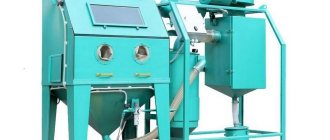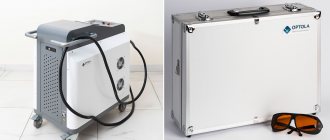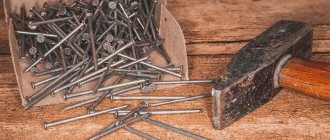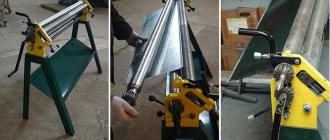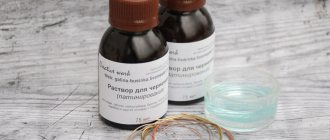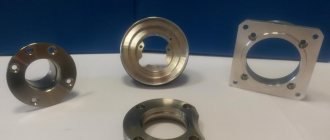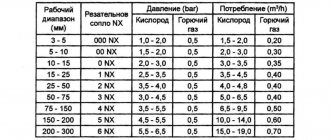When choosing a suitable abrasive material for sandblasting metals, it would be correct to take into account not only the price component of the material itself, but also focus on such an indicator as:
- rate of consumption of sand and material when processing metal.
Sand consumption for metal sandblasting is the most important indicator. It is identified and installed at the preparatory stage, before carrying out cleanup work, since the calculation allows us to establish the necessary financial costs for the entire available treatment area. In this case, such components of the process as the assembly of previously used material, the strength, hardness and thickness of the layer of contaminants on the metal, the characteristics of the material from which it is made, the plane and its condition, and the time required to carry out the work are taken into account.
The best abrasive material for cleaning metal will be the one that will help to obtain the highest rates of treated areas at the minimum cost of the work performed.
There are a number of criteria that are most positive for abrasive sand used in abrasive blast cleaning of metals. If you adhere to them, then its consumption during sandblasting will be optimal. Moreover, these criteria are in a direct cause-and-effect relationship with the place and purpose of the upcoming processing.
The maximum economic effect can be expected if sand of a suitable fraction is used for sandblasting metal in surface cleaning systems and in specialized prepared abrasive cleaning boxes. The involvement of sand and quartz-containing materials in abrasive blasting cleaning activities makes it possible to achieve a minimum cost of the work carried out. Analysis of such a component of the process as the consumption of sand during sandblasting of metal per 1 m2 of the area being cleaned can only be carried out approximately since
since its consumption depends on a large number of factors, except for the material itself from which it is made. Next, there is a gradation comparison of the consumption of abrasive materials for cleaning devices, which are used relatively often. Consumption calculation is indicated in kg.
per 1 m2 of metal, to obtain a degree equal to Sa 21⁄2, ISO 8501-1. Quartz sand: per 1 m2 when cleaning the metal to a degree of Sa 2½60-110 kg/m²Cooper slag: per 1 m² when cleaning to a degree Sa 2½35-80 kg/ m² Nickel slag: per 1 m² when cleaning to Sa 2½ 35-80 kg/m² Electrocorundum (corundum): per 1 m² to cleaning degree Sa 2½ kg/m² The sand consumption rate for sandblasting metal is 2-3 liters. sand per minute of work. From which it follows that the actual consumption of sand when carrying out work in the third position is 2 liters.
per minute: 144 kg. per hour or 96 l. per hour. Optimizing the cost of materials for a sandblaster is a very real task, provided that during the work, durable abrasive substances suitable for repeated use are used. Effective regeneration is undoubtedly achieved by modern units such as abrasive blasting systems with a closed processing cycle, vacuum systems for collecting waste material and wearable systems that prevent the spread of material.
However, it is also important to choose the appropriate fraction for specific types of work. So, to clean the surface from several old layers of paint, advanced levels of rusting of metal or residues of a cement-containing substance, enlarged grains of sand are used, which form a deep profile. Sand grains of the middle fraction combat surface rusting, poorly fixed, weak paint or a thin layer of soot. Small fractions are optimal for sandblasting thin metal products, since they form a surface profile. With large sandblasting of metal, sand consumption per square centimeter of the metal surface of the treated area, fewer grains of sand are consumed and therefore not all places will be sandblasted.
Using reusable materials, it is necessary to constantly supplement the working mixture to guarantee high-quality processing and maximum productivity. Fresh sand forms a uniform relief on the surface, however, after each subsequent regeneration, the grains of sand become smaller and smaller. It is in order to avoid this effect that the operator needs to periodically monitor the quality of the material being processed and, if necessary, add sand. With this method, the size of the fraction of the resulting mixture will be averaged between the size of the new and already used material. A non-standard approach to the work process when using abrasive will result in benefits expressed in decent cleaning quality.
But still, the final effect will depend on the particular characteristics of the specific material used. Date: 04/08/2015 Comments: Rating: 32 The number of materials used in the world for abrasive blasting is large. It is not practical to mention all of them. Let's focus on the ones most in demand by our compatriots. Garnet abrasive sand is used mainly in the operation of machines and waterjet cutting equipment.
How can you calculate sand consumption when sandblasting metal?
Sand consumption for metal sandblasting is the most important indicator. It is identified and installed at the preparatory stage, before carrying out cleanup work, since the calculation allows us to establish the necessary financial costs for the entire available treatment area. In this case, such components of the process as the assembly of previously used material, the strength, hardness and thickness of the layer of contaminants on the metal, the characteristics of the material from which it is made, the plane and its condition, and the time required to carry out the work are taken into account.
The best abrasive material for cleaning metal will be the one that will help to obtain the highest rates of treated areas at the minimum cost of the work performed. There are a number of criteria that are most positive for abrasive sand used in abrasive blast cleaning of metals. If you adhere to them, then its consumption during sandblasting will be optimal. Moreover, these criteria are in a direct cause-and-effect relationship with the place and purpose of the upcoming processing.
The maximum economic effect can be expected if sand of a suitable fraction is used for sandblasting metal in surface cleaning systems and in specialized prepared abrasive cleaning boxes. The involvement of sand and quartz-containing materials in abrasive blasting cleaning activities makes it possible to achieve a minimum cost of the work carried out.
Analysis of such a component of the process as sand consumption during sandblasting of metal per 1 m2 of cleaned area can only be carried out approximately because since its consumption depends on a large number of factors, except for the material itself from which it is made.
Calculation example for metal processing 1m2
Next, there is a gradation comparison of the consumption of abrasive materials for cleaning devices, which are used relatively often. Consumption calculation is indicated in kg. per 1m2 of metal, to obtain a degree equal to Sa 21⁄2, ISO 8501-1.
Areas of application
Natural quartz sand is used in the following areas:
- production of concrete and masonry mortars;
- production of multi-colored polymer floor coverings;
- production of flooring with an anti-slip effect for paths and platforms;
- creation of artificial marble using vibration casting technology;
- production of decorative plaster mixtures;
- as a decorative material in landscape design;
- for spraying onto heating elements;
- for sandblasting;
- as a decorative element in aquariums and gardening;
- in children's creativity as educational material;
- in the creation of decorative items in the “handmade” category.
This is not a complete list of applications for quartz sand; it is constantly expanding due to its versatility and unique performance characteristics.
Sandblasting with quartz sand
For high-quality cleaning of metal grating surfaces, a quartz sand mixture is used. Sandblasting copes with lattice surfaces that are difficult to clean from soot, scale, and rust. Read about the specific volume and density of marble in this article.
Sandblasting is a type of cold abrasive cleaning of surfaces made of metal, stone or glass.
New cleaning materials are appearing on the service market: garnet sand, cooper slag, steel shot, cast iron shot and others. The use of quartz in sandblasting remains relevant and profitable. It is crushed, like the flakiness of crushed stone, into fractions of different sizes, which allow you to select the type for a specific task, the degree of contamination and surface features. The fractional diversity and rounded shape allows the quartz mixture to be used on almost any professional equipment.
Advantages of sandblasting with quartz sand mixture:
- thorough cleaning of the surface;
- preparation for any subsequent processing;
- prolongation of the performance properties of the treated surface;
- material benefit - quartz mixture is cheaper than other similar cleaning products.
In contrast to the compaction coefficient of crushed stone, for sand the average consumption when processing 1 m2 is 50-100 kg, the highest figure among other materials. But quartz remains the most accessible and lowest-cost resource. In addition, consumption depends on:
- sandblasting machine power;
- degree of surface contamination;
- fraction size;
- nozzles used;
- purity, moisture content.
The downside is the formation of microcrystalline dust that is harmful to health. It is necessary to use protective suits, additional filters, and a dust removal system.
For wells
A granular mixture of quartz can be used as a filter element when constructing water-bearing wells. This filter is chemically neutral and budget-friendly.
Advantages:
- strength during the filtration process;
- chemical inertness, preventing secondary water pollution;
- sand grain porosity;
- absorbent properties that allow the retention of radionuclides, heavy metals and bacteria.
When taking into account the filtration coefficient, the only disadvantages include the poor quality of the mixture, which contains clay and slag. To construct a well filter, it is necessary to select well-purified natural material. Find out about the composition and use of wood concrete blocks here.
Eco-heaters
Quartz granules are used for the manufacture of modern electric heating devices and battery housings. There are two types of heaters:
- With a monolithic body consisting entirely of sand mixture.
- Infrared. A glass tube is made from quartz granules, in which the heating element is located.
Quartz sand is a monomineral resource, with an insignificant amount of impurities. Even the windows in the apartment can be called quartz - the translucent part is made of it.
Quartz sand at the base of the body allows the device to be: cheap, environmentally friendly, heat-intensive, and energy-saving.
Sinks made of quartz sand - artificial stone
Artificial stone is a popular material from which various household products are made. Kitchen sinks are especially popular. In addition to design, there are other advantages:
- variety of colors;
- strength;
- resistance to scratches and household chemicals;
- The protective coating makes the surface of the sink smooth and repels dirt;
- has noise-reducing properties;
- ease of repair.
It is worth considering that too active use of abrasive materials and scraping tools can damage the protective layer.
Disadvantages of a quartz kitchen sink:
- instability to high temperatures;
- very heavy objects can cause mechanical damage. For example, a cast iron frying pan;
- high cost of the product.
Polymer flooring made from natural materials - pros and cons
Crushed quartz is included in self-leveling decorative floor coverings. Advantages of this floor:
- strength;
- seamless surface;
- abrasion resistance;
- hygiene;
- environmental friendliness;
- design;
- Possibility of painting in different colors.
The inclusion of quartz sand in the solution for filling the floor significantly reduces the cost of the mixture. Often the choice of such a coating is dictated by the heavy load on the concrete floor. To extend its service life, the polymer is coated with a protective layer: varnish, mastic, wax. Read about the technical conditions for quicklime lump lime at this link.
Building mixtures for interior and exterior decoration of houses and grouting
In the production of finishing bulk mixtures they are used in the form of dust, fine and medium fractions.
Plaster and other wall mixtures are used both for finishing the facades of buildings and inside.
The content of natural monomineral granules in finishing materials gives the base the following properties:
- strength and increased adhesion;
- high vapor permeability;
- quick drying;
- impossibility of strengthening moss and mold on the wall;
- abundance of shades.
Plaster mixtures with quartz can be applied to concrete, gypsum board, and gypsum surfaces. Before applying quartz plaster, it is necessary to thoroughly clean the surface from dust and dirt. Pre-treated with a primer for better contact. What is the difference between polystyrene foam and extruded foam, read in this material.
Can it be used for road surfaces and concrete paving slabs?
The properties of natural granules are also used in the formation of asphalt mixtures, the production of concrete products, and paving slabs. Colored is convenient to apply to the road surface for warning purposes - to indicate dangerous areas or those that require increased attention from drivers and pedestrians. For example, designing areas in front of pedestrian crossings and public transport stops.
It is included in any cement mixture as a component with high adhesion, providing the best adhesion of the treated surface and coating. It is also used for filling joints when laying coatings using technology that requires such work. Loose homogeneous material tightly fills the intervals between tiles and ensures compact laying. Seam jointing provides:
- completeness and aesthetics;
- protection against plant germination;
- protection from destruction in winter;
- possibility of replacing one part of the paving cloth.
The roughness that sand imparts to the surface ensures tight adhesion of the wheels to the surface and reduces the risk of skidding when braking.
Covering sports fields and paths
Modern sports and children's playgrounds have a multi-layer coating, which ensures convenience, safety and cleanliness at the facility. Sports fields are backfilled with quartz sand and rubber granulate for bulk density and elasticity. Artificial turf or other covering is laid on top of the layer.
Paths in parks are covered with colored sand to achieve a decorative effect. The material of the largest fraction is used.
Child development, color for children's creativity
Quartz sand is a unique material used not only for laying paths, but also directly in activities with children. Playing with sand is a familiar and accessible way of entertainment, which is not available during the cold season. Fractions of crushed quartz are pleasant to the touch: round, smooth.
The material is painted in bright colors, it is attractive to children.
Activities with bulk materials develop fine motor skills and imagination. The development of fine motor skills and sensory perception is directly related to mental development. Find out about the density of aerated concrete here.
Using the material, children can create sand paintings, experiment, and develop cognitive functions.
Which sand is best for a sandblaster?
The following types of sand are used for sandblasting:
- Quartz, obtained by crushing quartz-containing rocks. This is the most popular type of sand with acute-angled particles, which increase the productivity of the device and reduce the consumption of abrasive during sandblasting.
- Quartz industrial, specially designed for sandblasting.
- Construction river or quarry. Used in cases that do not require high hardness of the abrasive substance. Before use, it must be washed to remove impurities that reduce the effectiveness of the treatment. To clean a structure or an old building from old paint, you can use quarry or river sand, not divided into fractions.
- Pomegranate. This material is superior in hardness to quartz. Due to its high cost, it is used only in certain cases, mainly for hydraulic cutting of metals.
Advantages and disadvantages of using sand for sandblasting
Disadvantages of using sand as an abrasive:
- Material hitting the surface being cleaned at high speed breaks down into dust, which leads to dangerous lung diseases. Therefore, sandblasting machine operators must work in special suits.
- Sand abrasive is a material with a relatively low hardness, which is the reason for its significant consumption during sandblasting.
- Low efficiency when processing hard materials and heavy contamination.
Despite its disadvantages, sand is still popular for sandblasting due to its range of advantages.:
- Not very high hardness - a plus for delicate surface treatment. Sand abrasive is often used for cleaning non-ferrous metals and alloys. If the wrong fraction is chosen for the work, then serious damage will not be caused to the surface.
- Any type of nozzle can be used with this abrasive material.
- A wide range of fractions allows you to choose the optimal grain size.
- Low cost of material.
How to choose the right consumables
It is clear that sandblasting different types of surfaces requires different consumables. The right choice allows you not only to increase the efficiency and speed of the processing performed, but also to significantly save on its implementation. The following factors influence which consumable material to choose for a sandblasting machine.
- The thickness of the layer of coating or contamination that needs to be removed, as well as its strength. If you choose a fine abrasive with low hardness for a thick and durable layer of coating or contamination to be removed, you may simply not achieve the desired result.
- The hardness of the material being cleaned. For harder substrates, you should choose a harder abrasive, and for soft ones, a less hard one, so as not to damage the surface being treated.
- Requirements for the surface condition after treatment. If the cleaned surface should have a minimum number of dents and chips, then for its processing you should choose an abrasive of a finer fraction.
- Required sandblasting speed. A hard abrasive, the particles of which have sharp edges, provides a higher processing speed than a similar one with rounded particles.
- Possibility of organizing the collection and reuse of abrasive. If this is not possible, then it is more advisable to use more inexpensive materials for processing: quartz sand, cooper slag and nickel slag.
Comparison of the main parameters of abrasive materials will help you make the right choice
Abrasive Differences
Abrasive processing allows you to clean metal structures and concrete slabs using microparticles that are blown out by a powerful air stream. The equipment creates kinetic energy, which throws the abrasive onto the surface being treated at tremendous speed. In this way, frozen deposits are removed from the material.
Sand for sandblasting varies in material and particle size. In order to obtain a high-quality surface after processing, a number of requirements should be taken into account:
- To be considered high quality, sand for sandblasting goes through several stages of processing before being put on sale. It is not profitable to buy expensive mixtures, but cheap ones will damage the material when the compressor operates.
- Sand for sandblasting is selected depending on the type of material being processed. Construction stores sell universal mixtures.
- If the surface of the part is damaged, gentle abrasives must be selected. They will maintain the integrity of the workpiece.
- Fraction. Fine abrasive is not economical for cleaning areas with a large layer of plaque. At the same time, it is suitable for finishing work.
Often purchased mixtures are diluted with various chemical additives. You need to pay attention to this when choosing.
Corundum (aluminum dioxide and oxide, electrocorundum)
Markings and designations on abrasive wheels.
This type of abrasives is an industrially produced crystalline aluminum oxide (dioxide). This is a material with high abrasive efficiency. Its hardness is only one unit less than that of diamond. The ability to use it repeatedly makes the material indispensable in a dust-free cleaning system, in a sandblasting chamber, in offices and cabins. Lighter, compared to metal shot, corundum particles more often than others find their use in sandblasting injection chambers.
Aluminum oxide as an abrasive is involved in decorative processes, for example, in steel (and other types of materials) matting. Sandblasting using corundum is one of the shortest in terms of time.
Nickel slag and cooper slag
These materials are abrasive powders that are obtained from the processing of nickel-copper smelting slag. Their difference with sand is that they contain less than 1% quartz of the free variety, and their use is possible in open-type sandblasting. They have slightly increased hardness, higher abrasive capabilities and dynamic strength, so their dust formation is lower, which allows them to be reused.
Hardness scale for abrasive tools.
The specific density of particles of these powders is higher than that of sand, therefore, the weight of the particles is slightly greater, which again affects the effectiveness of such abrasives in the direction of increasing.
Difference between nickel slag and cooper slag
Nickel slag can be used up to three times due to its high characteristics of dynamic strength of particles and their hardness. The degree of dust content is significantly lower than that of the second material. However, nickel slag has a much lower specific density of particles, because of this, in terms of energy impact on the surface of the element being cleaned, this material is inferior to the second one.
Using nickel slag and cupro-slag for cleaning makes sense for maximum use in open cleaning, as well as in conditions in which the ability to collect abrasive for the subsequent process is not available or limited.
Buying these types of powders in our country will not be very difficult: they are produced by more than one large enterprise that has an extensive branch of distributors in most domestic regions.
The consumption of nickel and cooper slag is the same, 30-75 kg per m².
Return to contents
How to dry sand for sandblasting
Modern industry produces various installations for drying bulk substances. These include a drum sand dryer. A drying chamber with a built-in sieve allows you to significantly reduce the drying time and combine it with sifting sand, which will ultimately improve its quality.
At home, drying sand for sandblasting is possible using one of the following methods. Secure a sheet of metal or metal box to the legs. Light a fire under it, or install a heater or other heater. Pour raw river sand onto a metal surface to dry. You can also dry sand scattered on film or other material using a heat gun.
Prices for quartz pellets in bags, per ton
The average price for quartz sand in Moscow varies, depending on the fraction and packaging. Sales are carried out in bags of 25 and 50 kg, small size.
| Sand in bags of 25 kg | MKR (from 1 ton) | MKR (from 20 tons) | |
| Light rounded quartz sand (SiO2 no less than 99%) | 135 – 300 rubles depending on volume and fraction | 3,700 – 4,900 rubles depending on faction | 3,500 – 4,700 rubles depending on faction |
| Dark rounded quartz sand | 345 – 300 rubles depending on volume | from 3900 rubles | 3,700 rubles |
| White quartz chips | 250 – 460 rubles depending on volume and fraction | 8,400 – 14,000 depending on faction | 8,300 – 13,000 depending on faction |
If you want to purchase sand for abrasive work in Moscow, St. Petersburg, Yekaterinburg or other cities of Russia, our company offers modern abrasive for sandblasting work. High-quality and safe abrasive powder of various fractions with a purity degree of up to Sa3.
produces granulated slags for sandblasting for effective and safe cleaning of various types of surfaces in accordance with international requirements and safety standards. A wide network of our own warehouses and representative offices allows our customers to buy abrasive sand at competitive prices and with a quality guarantee. Highly qualified company managers will select the required type of abrasive and its fractional composition, based on the problems that you need to solve.
Cooperation with UralGrit means high efficiency and safety of your work, economical use of budget and time, comfortable service and optimal solution to even the most complex problems.
Garnet sand - garnet
This abrasive powder is of mineral origin. The main producers are India, Australia, South Africa, and the Czech Republic. It is represented by several distributors in Russia.
Its characteristics are many times superior to those of sand, nickel and cooper slag. The increased strength of the particles, coupled with their hardness, makes it possible to reuse garnet sand during the sandblasting process.
The use of garnet has shown its effectiveness simultaneously with dust-free processing equipment and abrasive recovery systems.
Return to contents
